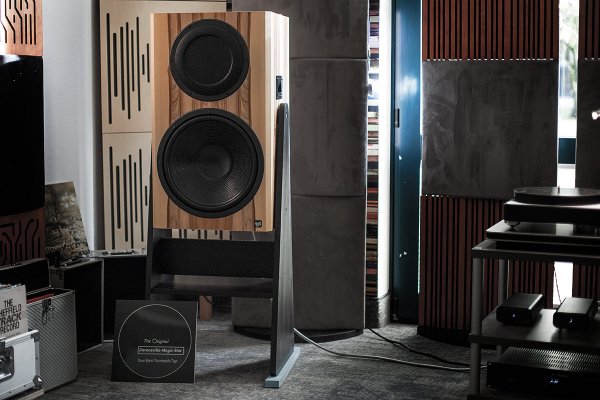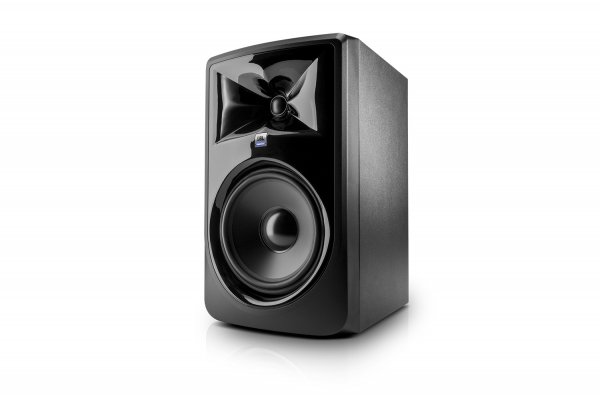Are there any other members here using active speakers, and if so, which ones and for which reasons?
I do, but before getting into the reasons for my using and preferring actively configured speakers, I find it may be prudent to stress the one fundamental aspect of active speakers; namely that the filtering is done prior to amplification. I guess this goes without saying, but quite a few people interested in audio reproduction, even reviewers, refer to active speakers as all-in-one packages mainly, as if this was the only way to address active speakers with all that entails. One of the primary criticisms leveled at these active, bundled speaker packages is that they lend no way for the audiophile to choose between and experiment with different amps, cables and maybe even DAC's, robbing the audiophile of a vital element in his or her hobby.
Well, this needn't be so - indeed tweaking can be taken to a whole new level with an active configuration. Again: active means filtration prior to amplification, and this can be achieved with separate components as well. A daunting prospect perhaps in one area in particular, that of likely setting up the cross-over values by yourself. This is understandable, but once you get your head around using a given digital cross-over and the parameters involved, it's a potentially freeing process and even demystifying of cross-overs. Think about tweaking cross-over settings on the fly and from the listening position via your laptop/tablet in an ultimately rewarding trial-and-error process, eventually heading towards or even landing at the presentation that
you prefer. If this however is an intimidating thought or otherwise simply not your cup of tea there are active speakers out there as separate components with factory presets to go by (like Sanders Sound), although they're not to be found in multitudes.
As for the reasons for my using an active set-up, it's first and foremost because - going by the active set-ups that I've heard, at least - that I find them to sound better than passive dittos, simply put. The set-ups that have formed or shaped my frame of reference into this subject are speakers that were passive to begin with and then converted into active, hence my having a direct comparison with the same speakers in one and then the other configuration. In one case different amps (adding more channels) were brought into the mix going active, and in others dual amp set-ups remained to power 2-way speakers actively.
The differences going to active, in all scenarios, had a similar imprinting though; the passive iteration sounded somewhat duller with less transient snap, more smeared and slightly "thicker" as if inertia held on to their presentation. Some might refer to the passive version sounding warmer or more musical here, and they'd be in their right to feel this way about it, but to my ears active is just more transparent and "monitor" in the way of being a more freed, less restricted, less character-inducing and more tonally correct presentation. A recurring phenomena with passive was an irritatingly grainy and "sizzling" character to the high frequencies (and the passive cross-over used here comprised excellent parts quality), whereas with active they became non-intrusive and subjectively better resolved - better ingrained into the whole of the presentation.
"But digital filters are prone to use A/D to D/A conversion on top of D/A conversion from a separate DAC [if such is used], and they're bad for sound," they say. Put into perspective: compared to what? This criticism is often leveled as if a passive cross-over was a transparent set of components to begin with, which is far from the case. Signal level filtration in the digital domain remains utterly impervious to SPL with rock-steady and ultra precise filter values in any case vs. a passive filter (with value tolerances in the first place) taking the full-wattage signal from the amp(s), but most of all it would simply seem filtration on signal level prior to the amps and with the amps seeing directly into the drivers, is the primary reason for the pedigree of active config.; it's also about the amps operating closer to their full potential. Mainly though: the proof is
in the eating of the pudding, as they say.
With the summed experience of from-passive-to-active speaker set-ups I opted to buy a pair of used pro cinema speakers, Electro-Voice TS940D-LX (sans passive cross-overs). The DH1A compression driver + horn is fed by a 30 watt pure class-A Belles SA30, the dual EV 15" basses by a Crown Macro-Tech 1200 (soon to be replaced by a Crown K2), and the two MicroWrecker tapped horn subs (CAD drawing of them as my profile pic) are powered by a Crown K2. The EV horns are crossed to the dual 15" EV bass cabs at 789Hz 36dB/octave Linkwitz-Riley, the EV bass cabs are crossed to the tapped horn subs at 83Hz 36dB/octave L-R, and finally the subs are high-passed at 20Hz 36dB/octave Butterworth to protect the 15" B&C drivers below the tune.
EDIT: I forgot to mention a vital component used in my set-up, namely the Xilica XP3060 digital cross-over. It's a professional, very high quality XO, and I have tested it running over passively filtered main speakers in an initial configuration incorporating a sub (these passively filtered main speakers were run with the Xilica XO in the signal chain because they needed to be high-passed), which also had me determine the degree to which the Xilica XO affected the sound quality compared to it not being in the signal chain. To my surprise and by all accounts the Xilica's "electrical presence" went unnoticed - quite an achievement, and a giveaway to its SQ influence compared to a passive filter.
























